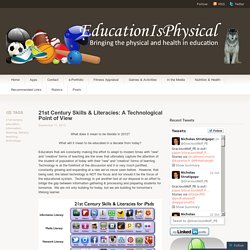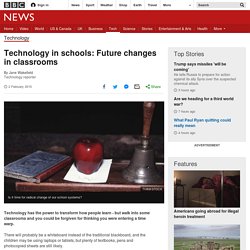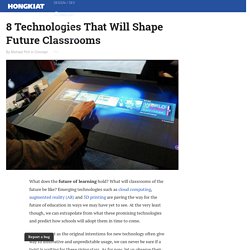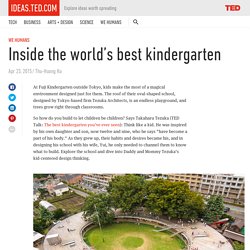

Gathering, learning, creating, inspiring for the kids I teach
21st Century Skills & Literacies: A Technological Point of View. What does it mean to be literate in 2012?

What will it mean to be educated in a decade from today? Educators that are constantly making the effort to adapt to modern times with “new” and “creative” forms of teaching are the ones that ultimately capture the attention of the student of population of today with their “new” and “creative” forms of learning. Technology is at the forefront of the discussion and it is very much justified, constantly growing and expanding at a rate we’ve never seen before. However, that being said, the latest technology is NOT the focus and nor should it be the focus of the educational system. Technology is yet another tool at our disposal in an effort to bridge the gap between information gathering & processing and preparing students for tomorrow.
Like this: Like Loading... Future School of Finland. The 13 most innovative schools in the world. Technology in schools: Future changes in classrooms. Image copyright Thinkstock Technology has the power to transform how people learn - but walk into some classrooms and you could be forgiven for thinking you were entering a time warp.

There will probably be a whiteboard instead of the traditional blackboard, and the children may be using laptops or tablets, but plenty of textbooks, pens and photocopied sheets are still likely. And perhaps most strikingly, all desks will face forwards, with the teacher at the front. The curriculum and theory have changed little since Victorian times, according to the educationalist and author Marc Prensky. "The world needs a new curriculum," he said at the recent Bett show, a conference dedicated to technology in education. Most of the education products on the market are just aids to teach the existing curriculum, he says, based on the false assumption "we need to teach better what we teach today". 'Flipped' classrooms He might be wrong there. Image copyright Sudbury Primary School Teachers 'surprised' 8 Technologies That Will Shape Future Classrooms.
What does the future of learning hold?

What will classrooms of the future be like? Emerging technologies such as cloud computing, augmented reality (AR) and 3D printing are paving the way for the future of education in ways we may have yet to see. At the very least though, we can extrapolate from what these promising technologies and predict how schools will adopt them in time to come. However, just as the original intentions for new technology often give way to innovative and unpredictable usage, we can never be sure if a twist is waiting for these rising stars. As for now, let us observe their progress and speculate on how these 8 up-and-coming technologies could potentially change education for the better.
Recommended Reading: Major Tech In Education Trends In 2013 [Infographic] 1. We’re still waiting for Augmented Reality to take the world by storm by way of Google Glass, gaming and awesome apps for astronomy. Read Also: 5 Top Augmented Reality Apps For Education A New Way To Teach 3. Inside the world’s best kindergarten. At Fuji Kindergarten outside Tokyo, kids make the most of a magical environment designed just for them.

The roof of their oval-shaped school, designed by Tokyo-based firm Tezuka Architects, is an endless playground, and trees grow right through classrooms. So how do you build to let children be children? Says Takaharu Tezuka (TED Talk: The best kindergarten you’ve ever seen): Think like a kid. He was inspired by his own daughter and son, now twelve and nine, who he says “have become a part of his body.”
As they grew up, their habits and desires became his, and in designing his school with his wife, Yui, he only needed to channel them to know what to build.